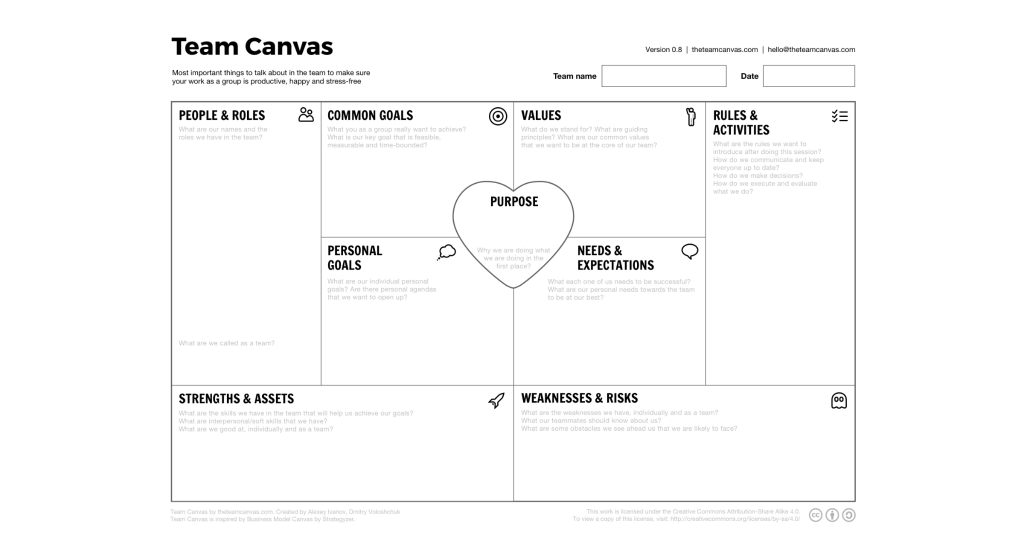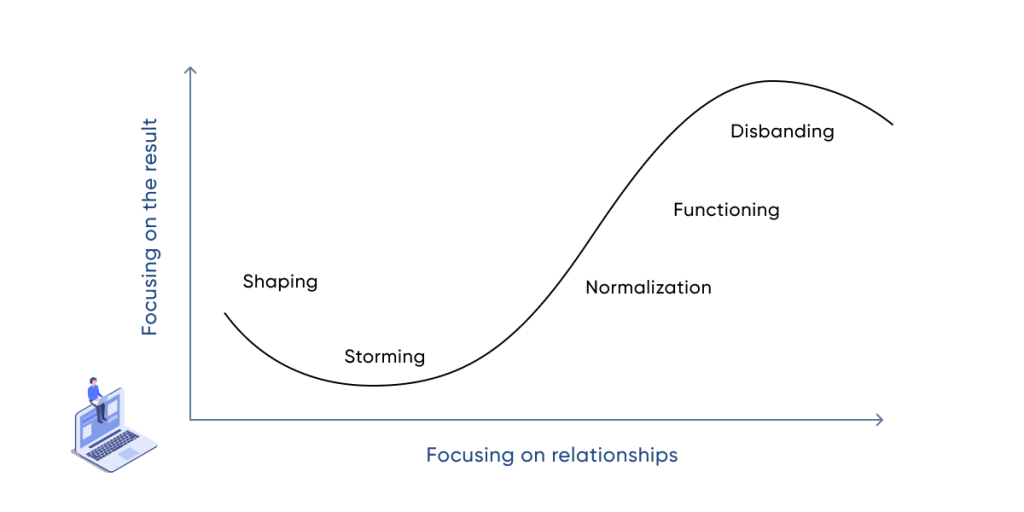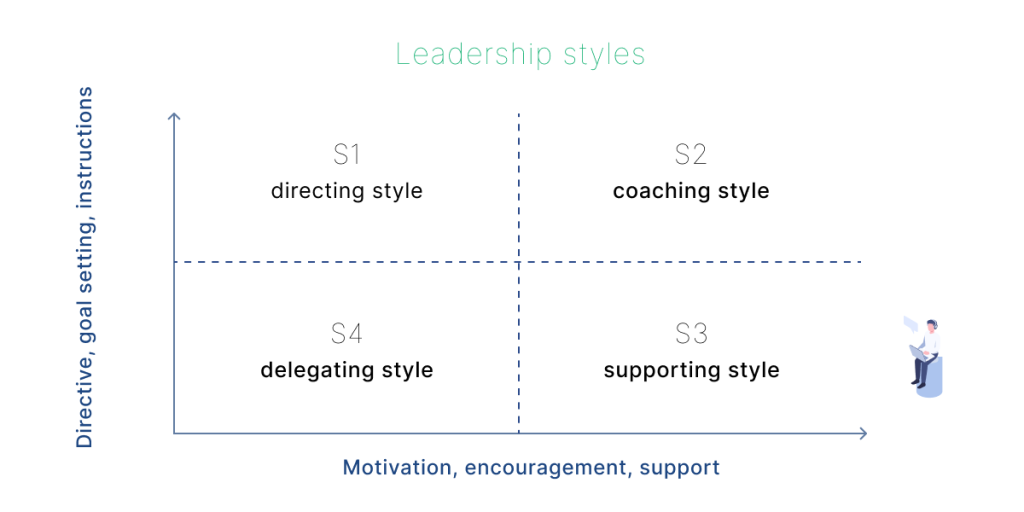Hello! I am Ivan Antipin, Deputy Director of the Development Department at IMAGA. I have worked with dozens of teams in my career. Sometimes as a developer or as a team leader, sometimes as an outside specialist. I’ve had enough time to figure out how people behave in a team. However, not all questions have clear answers. For instance, what is a team, how does it work, and how to manage it? In this article, I will try to describe the methods and approaches that I personally find useful and effective.
What makes a team
When I was a kid, I played soccer. My father, a professional biathlete, used to say, «Some soccer players run, and some take a stroll. You can give a hundred percent, be the best on the field, and still lose.»
Of course, I didn't agree with that and kept playing. I knew that if some random people go on the field, it can happen. But if it is a team, everybody does their best. You either win as a team or lose as a team. But why that is, I did not understand.
As an adult, I have read a lot of smart books, changed several jobs, and now I am ready to explain to my 10-year-old self what sets a team apart from strangers who sometimes spend time together. It is a goal and a vision. Everyone on the team understands what they need to do to achieve their goal together.
This interpretation of a team is the basis for the Team Canvas framework. According to it, the formalized concept of the team is a set of attributes. What these attributes are can be seen in the diagram below.
Mission and goal
The picture makes it clear that the heart of any team is a mission and a goal. Most authors distinguish between these two concepts. Let’s compare them.
The difference is hard to describe, but quite easy to feel. The mission is much more complicated. Only mature teams have a mission. It answers the question, «Why are we here every day?» Often the mission comes to a team from the top through the corporate culture and it is not always spelled out aloud. A team often understands it intuitively, or doesn't understand it at all. It's hard, if not impossible, to complete the mission.
But the goal is well within reach. So, a team can work without a mission but not without a goal. It is the goal that brings a team together and keeps it this way. It’s common to set a SMART goal, which means this goal is:
- limited in time;
- achievable:
- measurable.
Some good examples of a team goal would be to release an MVP by the end of the summer or to increase product retention in 2 months.
Values
An important attribute of a team is values. People have to agree on fundamental issues. It determines how they will communicate and understand each other. Values are fostered by our culture and upbringing. They are often connected with the age of team members. Values can be personal (mutual respect, honesty) or professional (we write only clean code, use only modern data stack). It is almost impossible to influence them inside the work process.
During one of my webinars, someone gave me a great example. This person worked as a team leader on quite a motley team, there were people spanning different generations, with different views and different backgrounds. Right before New Year, he and his wife decided to change their appearance, she had her hair dyed bright pink and he had his beard dyed bright blue. One of the developers on his team was pretty conservative. He figured that because the man had a blue beard, he was gay. That's when a workplace drama started. The developer challenged all the decisions of the team leader and made the rest of the team second-guess him too. Eventually, they could no longer work together and the developer left the team. After that, it took quite a while for the team leader to restore his authority.
To avoid this failure, he should have learnt about the team's values, to look closely at the principles by which it lived. It turned out that these values and principles were very different. To assemble a strong team, you should remember that its members must share values. This is especially important in crisis situations.
Personally, I believe that shared values are what makes a cohesive team and helps it survive tough times.
Rules and practices
This attribute of the team, in my opinion, is not so relevant now. It requires the team to have well-established professional traditions, customs, and rules. Yet nowadays it is the framework, be it Agile or Kanban, that defines practices. As for the rules, they are set by corporate regulations.
But sometimes it is important to combine company rules with team traditions. Hobby clubs (for example, we have TeamLead Club, Managers Club, and architectural committees), a trip to the countryside once a year, and daily warm-ups for the whole department — common rituals unite us. Sometimes they pop up randomly, and sometimes it's worth introducing something on purpose.
Roles and skills
Every team has its own structure: functions, positions, and tasks. A team leader understands what skills are important for each role. But at the same time remember that behind the roles there are real people, not robots. Everyone has weaknesses and strengths, developed and undeveloped skills. A good leader pays attention to both:
- emphasizing a person's strengths in their work,
- improving weaknesses through individual growth plans.
To put it simply, a good team leader understands the soft skills and hard skills of each team member and takes them into account when planning their work.
How the team develops
To make a team, it is important to understand how it develops. Every team has its own life cycle. The following chart shows the main stages a team goes through.
This model was developed by an American psychologist Bruce Tuckman. He researched submarine crews. The military wanted this research to prevent a mutiny on the ship during long voyages. To do that, they had to understand what stages of development each team goes through. This model proved to apply not only to sailors.
Tuckman's research showed that, for the most part, all teams behave similarly. The graph above reflects this behavior. At the formation stage, everyone in the team is cautious, polite, and studying each other. Many want to establish themselves, and the enthusiasm of the whole group is high. One could think that this would always be the case, and the team bonded at once.
But this is not true. Give it some time and the productivity drops, while the team starts to argue. This is where the real development of the team begins. The storming stage comes with conflicts and misunderstanding. The team leader's job at this stage is to control the situation, to weather the storm.
This chart gives us one important rule:
The team's productivity during the formation phase always decreases.
Only when the storming stage is over, the team can come out on top in terms of productivity growth. At this very moment the team can reach a plateau, and start working steadily, smoothly, and predictably. But it is important to remember that even the most well-coordinated team is not immune to a decline in productivity and a new round of the cycle — a new storming and a new norming stage.
Here, I would like to shift the focus of attention from team building to the team leader's responsibility for that process. How quickly the team overcomes the storming stage, how fast it can reach a plateau, and how long it can go without a new round of conflict is all up to its team leader.
Team building
Team Canvas and the team life cycle are the two most important tools in the hands of a leader. They must be applied simultaneously and very thoughtfully. It all starts with the formation of the team. Already during the hiring process, we can predict how long the team will be storming or what it will eventually grow into. Therefore, it is necessary to approach recruitment carefully.
Team Canvas and the team life cycle are the two most important tools in the hands of a leader. They must be applied simultaneously and very thoughtfully. It all starts with the formation of the team. Already during the hiring process, we can predict how long the team will be storming or what it will eventually grow into. Therefore, it is necessary to approach recruitment carefully.
For example, understanding the attributes of the team will help you correctly write a job description regarding the skills required of the candidate, and help HR specialists make a portrait of the ideal candidate and ask the right questions at the interview.
How to manage a team
If you pick the right team, it will be comfortable and interesting to manage it. But where to begin this process? I think you should start by managing yourself. Self-discipline and a precise plan of action will help manage the team and understand what to do with it even in the worst of crises. To do this, it is important to prepare the infrastructure, which includes:
- rules,
- regulations,
- meetings,
- algorithms,
- checklists, etc.
It’s crucial for a team leader to adhere to the rules of the team themselves. If they lead by example and show that these rules work, then the rest will want to abide by them too.
If you form a team and build processes inside correctly, you can lead this team through all the stages of formation with little to no loss.
Discipline and responsibility go hand in hand. If a person is a responsible individual, they are highly unlikely to violate discipline. Personal responsibility is more powerful than team responsibility, and the personal responsibility of a team leader is an example of what that responsibility should be.
Discipline and responsibility go hand in hand. If a person is a responsible individual, they are highly unlikely to violate discipline. Personal responsibility is more powerful than team responsibility, and the personal responsibility of a team leader is an example of what that responsibility should be.
Leadership styles
At IMAGA, a team leader is not just a role but a profession in its own right. I have repeatedly emphasized the leader's responsibility to the team. So now we are going to talk about it. Their determination, discipline, and willpower can carry a team through the greatest challenges.
There is another model that illustrates leadership styles:
A good team leader doesn't stick to one of these styles but uses all of them. These styles are not something fixed, but a tool in the hands of the manager. In every situation, they choose the one they need at that moment.
In the storming stage, you often have to be a dictator: make all the decisions by yourself and curb conflicts harshly. During the norming stage, it is more beneficial to be a coach — to help, to guide, to teach. When your team reaches a plateau, you can trust it to have more leeway. And when the team runs like clockwork, you just have to maintain the infrastructure.
Of course, all of these recommendations are quite vague. Only the team leader themselves can decide when and what style is more appropriate. Even at the peak of productivity, you sometimes have to be a dictator to promptly deal with some production problems — a deadline is approaching or something has gone awry. But you should always remember that you can choose between styles.
Team leader personality
You can decide which style and when is more appropriate only by assessing all the circumstances at once: the mood of the team, the stage of formation, and the values and personal goals of each team member. You should therefore feel and understand all of it.
Empathy is the most important quality for a team leader, which helps them understand the needs of the team.
To show empathy means to understand a person intuitively, to feel their mood, to put yourself in their shoes, and be with them through their struggles. Even the most introverted developer notices changes in the team's atmosphere. Even if they are silent, it does not mean they like everything.
I believe all people fall into two types:
- Some explain their decision by saying, «I think that...»
- Others repeat, «I feel that...»
The first variant is the level of rational thinking about the situation. The second is an emotional one. Whether we like it or not, working with a team is almost always about emotions. This is especially important to keep in mind during the storming stage. And it is empathy that will solve the conflict and help you hear the other person out, understand their turmoil, which will lead you to the next step toward a strong team.
The lack of empathy is always evident in moments of crisis. When the deadline is approaching and the whole team is at its limit, what words can a team leader use to motivate them? «I'm going to fire all of you» — I don't think so. «I'll pay twice as much for working overtime» — possibly. But both options speak of powerlessness. A good leader appeals to people, not to staff units, and people appreciate it.
A crisis brings a properly formed team together, it doesn’t test how strong this team is.
If you're a team leader, answer the question, «What will I tell the team if we have to work all weekend?» Or imagine what a team leader would tell you to make you go to work on your day off. Would they demand and threaten, beg or plead, or maybe something else? Surprisingly enough, either variant could be the right one.
It should be a decision made by the team leader using language that is familiar and clear to the team. Ideally, there should be a team meeting where everyone's opinions would be taken into account and everyone could speak their mind. The agenda of the meeting should be clear to everyone, as well as the circumstances that led to this situation. In this case, the agenda of the meeting is simple: we need to work this weekend, if anyone is against it, I suggest we discuss why. It is better to postpone the analysis of causes and consequences until the next sprint retrospective.
Creating a safe environment for discussion and the culture of team decision-making is the responsibility of the team leader.
To summarize, the team leader is responsible for the team, and the team is responsible for the product. Therefore, the leader has to show human qualities more often than professional ones. Moreover, a competent leader is not afraid to take on a team of people who are more skillful than they are, because this will help the team to achieve its goals faster.
Their own goal is to help the team.
I'm sure everyone reading this has their own experience of team management and their own idea of right and wrong. Tell us about it in the comments — the more models we know, the better. As George Box wrote, «All models are wrong, but some are useful.»



